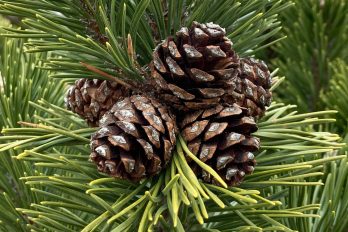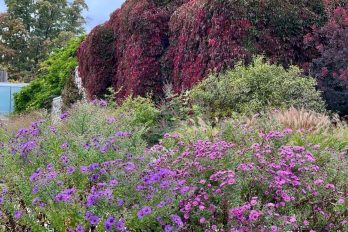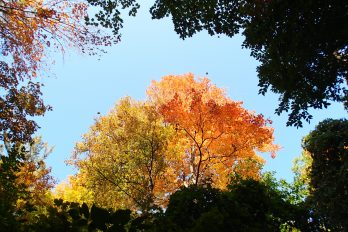Once dominated by white ash (Fraxinus americana), the forest east of our Teaching Garden is now an open canopy with only a few trees remaining. This significant change, noted in field surveys, is the result of Emerald Ash Borer (EAB). EAB is a non-native invasive insect (Agrilus planipennis) which feeds on the cambium layer of ash trees, causing mortality. With an estimated 860,000 ash in Toronto alone, this has meant a major loss of forest canopy and also increases the risk for invasive plant species.
While inventorying the vegetation at the gardens, a hairy woodpecker was observed feeding from dying ash trees. Interestingly, research suggests that native woodpeckers preferentially feed on infected ash and may help slow the spread of EAB (Flower et al. 2014). In addition to foraging habitat, standing snags and downed deadwood provide a series of other ecological benefits such as nesting sites for birds, roosts for bats, or shelter for amphibians.
Exotic pests and disease are a major threat to the health of our forests. One of the easiest ways to prevent their spread is to not transport firewood, soil, or plant material far distances (beyond 80 km). EAB typically only moves a few km per year, but with help from people it can travel much faster!
To learn more about how to prevent the spread of invasive pests, visit: https://invasivespeciescentre.ca/




